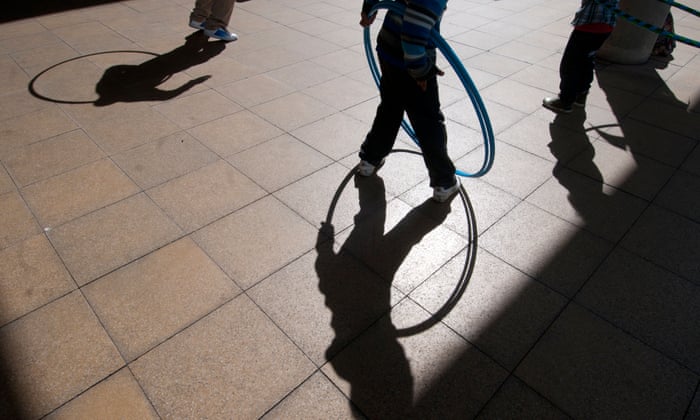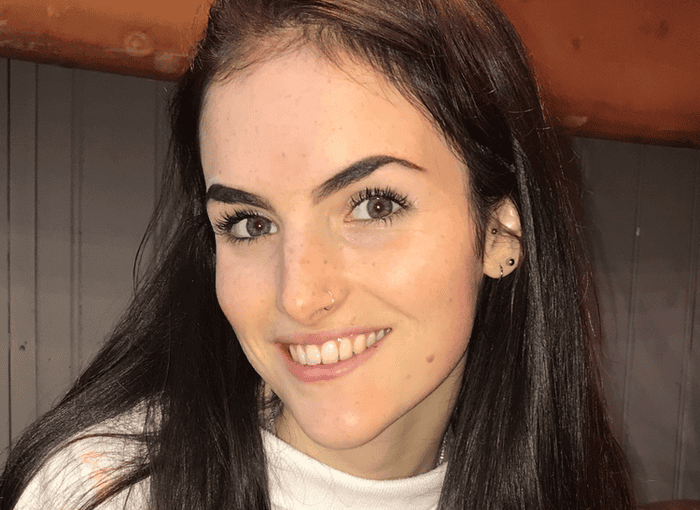What is happening with children’s mental health? NHS report
The first official figures since 2004 showing how common mental health problems are among children and young people were published on Thursday.
The statistics have been collated by NatCen Social Research, the Office for National Statistics and Youthinmind, and funded by the Department of Health and Social Care. They are likely to be seen as the definitive data on how many young people are struggling mentally, for example with anxiety, depression or hyperactivity.
Mental health disorders on rise among children
The 2004 data captured the prevalence of diagnosed mental health conditions in five- to 15-year-olds in Britain, based on a survey of 7,977 of them. One in 10 of that age group had such a disorder, the researchers concluded. Children from lone parent or reconstituted families, or whose parents were unemployed or had no educational qualifications, were more likely to be suffering.
However, this time they have collected information on 9,117 children and young people only in England. While they have looked again at five- to 15-year-olds, they have also examined for the first time the mental health of preschool children (two- to four-year-olds) and also 17- to 19-year-olds.
Why is young people’s mental health in the news so much?
It has become an issue of real concern, in the media and to both politicians and NHS leaders, over the last five years in particular. It has prompted numerous inquiries, reports, recommendations and pledges by politicians and NHSleaders to improve the situation.
The children’s commissioner for England, Anne Longfield, published a new analysis of the situation on Thursday, for example. She found that only a “small fraction” of those who needed help were getting it from the NHS.
Last year, for example, 37% of the more than 338,000 under-18s referred to NHS child and adolescent mental health services (CAMHS) in England were denied any help at all because they were not accepted into treatment or were discharged after being assessed. While 31% did begin treatment within a year, the other 32% were still waiting at the end of the year.
While there has been some progress in NHS mental health care for this age group “there is still a vast gap between what is provided for children suffering from mental health problems and what is needed to treat them. The current rate of progress is still not good enough for the majority of children who require help,” Longfield said.
Javed Khan, the chief executive of Barnardo’s, said: “We’re no longer headed for a crisis; we’re already there.” Dr Bernadka Dubicka, the Royal College of Psychiatrists’ spokeswoman on these issues, said: “Too many children are still falling through the gaps in mental health care.”
What is the government doing about all this?
It was a priority issue for David Cameron’s coalition government, which promised to give NHS child and adolescent mental health services in England £250m more a year every year between 2015 and 2020.
Theresa May has made it an even higher priority because she sees treatment of people with mental illness as one of the “burning injustices” of British society she wants to tackle as prime minister. She published a green paper on the subject a year ago and unveiled ambitious-sounding plans to expand NHS services for troubled youngsters and do much more to identify problems early and prevent them becoming long-term, as most mental health problems among adults began in childhood. Under her plans, schools will be given a key role.
However, children’s charities, the National Audit Office and the Commons education and health and social care select committees have all said that her and the NHS’s pledges are nowhere near ambitious enough, given what all the evidence shows is a big gap between the need for care and the NHS’s ability to meet that need. For example, even under the NHS’s existing plans, the proportion of under-18s needing care who get it will only rise from 25% to 35% by 2021.
But further details of action, possibly including new waiting time targets to tackle delays in receiving treatment that can be as long as 18 months, will be included in the NHS long-term plan, which is due out at the start of December.
How many children and young people have a mental health problem?
It was 10% of five- to 15-year-olds in 2004. The comparable figures for 2017 released on Thursday show a slight rise to 11.2%. Attention or blame is likely to fall on the ubiquity in young people’s lives of social media and its damaging effects, for example through online bullying.
In the UK, Samaritans can be contacted on 116 123 and the domestic violence helpline is 0808 2000 247. In Australia, the crisis support service Lifeline is 13 11 14 and the national family violence counselling service is 1800 737 732. In the US, the suicide prevention lifeline is 1-800-273-8255 and the domestic violence hotline is 1-800-799-SAFE (7233). Other international helplines can be found at www.befrienders.org
Get Society Weekly: our newsletter for public service professionals
But the causes are much more numerous and more complex and include poverty, family dysfunction, being the victim of a sexual assault, exam stress and many other reasons.
The most recent figures show that a total of 389,727 under-18s in England are being treated every year for some sort of mental health condition and that about 50,000 people that age are being referred, mainly by their GP, for help every month. However, many do not seek help and some families, frustrated by sometimes long delays, end up paying for private counselling.
Who is more affected, boys or girls?
The 2004 survey found that boys were more likely to have a mental disorder than girls. However, the number of girls needing hospital care for self-harm via cutting or poisoning has risen about threefold in the last decade or so, while the increase was less dramatic among boys.
What about eating disorders?
Conditions such as anorexia and bulimia can be very hard to treat and require a long spell in hospital in order to save a sufferer’s life. Anorexia has the highest suicide rate of any mental health condition; about 20% of deaths due to the disease were the result of someone taking their own life.
An eating disorder is most likely to be diagnosed in people aged 15-19. It has been estimated that two girls out of every 1,000 will be diagnosed with an eating disorder. Eating disorders are the commonest new-onset mental health disorder in adolescent girls after depression. Families and mental health charities complain that sufferers often find it hard to get treatment, especially a bed in a specialist treatment unit, where a patient can end up spending a year or more. “There is a gulf between the level of need and the numbers accessing specialist treatment,” said a spokesman for the charity B-eat. The number of under-18s being admitted to hospital for treatment in England rose 113% between 2010-11 and 2016-17, compared with a 92% rise among all age groups.
Do NHS child and adolescent mental health services have enough beds to cope with demand?
Often not. Bed shortages are common. Many hundreds of children and young people are sent away from their home area simply in order to get a bed in which to be treated, often for many months. Some end up several hundred miles from home, while dozens of patients with eating disorders are sent from England to Scotland every year to be treated in private hospitals in Glasgow and Livingston. However, NHS England is making good progress in delivering on its pledge of increasing the number of what are called tier 4 CAMHS beds by 150-180. Scores of extra beds have been opened since 2016
'I felt so worthless': two teenagers on their mental health struggles
Caitlin Dews, 18, and Harvey Sparrow, 16, describe their struggles with anxiety and depression
Caitlin Dews and Harvey Sparrow Photograph: Handout
Caitlin Dews, 18, Norton, North Yorkshire
I’ve struggled with my mental health for seven years. I’ve got anorexia, and depression and anxiety. It started at school when I was 11. I don’t remember the root causes. I just started being really anxious and restricting what I ate, and hiding food. I felt so worthless and horrible. I hated the way I looked. I started self-harming, my mood was really low and it all spiralled out of control.
I didn’t understand what was going on. After a while, I thought it was normal to feel like that. It’s only recently that I’ve started realising that a lot of people suffer.
When I was 14 a friend noticed I wasn’t eating and was really withdrawn and told a teacher. I was really angry and annoyed but, looking back, I’m glad she did that because I wouldn’t have said anything. They then told my parents and I was referred to child and adolescent mental health services. I still didn’t think anything was wrong with me.
My parents were heartbroken. I can’t imagine how hard it is for them. I’ve put them through so much. I was in hospital for just under a year and they had to visit me and see me in such a distressed state. I think they found it really tough and still do.
I felt I couldn’t go out for ages. Even now, when I go on public transport I get really anxious. At its worst I used to panic, my heart beat faster and I started shaking. My thoughts would race and I would think that everyone was staring at me and that something bad was going to happen. Everything was exaggerated. Most times, I felt like I deserved self-harming. It was like a punishment for eating or going out.
There are days when I feel more optimistic about my future. Things are still hard but I’m doing a lot better than I was. Quite a few people have told me that they struggle with anxiety. It’s not fair. I know some amazing and lovely people; they don’t deserve to be going through that.
Harvey Sparrow, 16, Badsey, Worcestershire
When I started my GCSEs, my school was really pushing everyone, saying we all had to do well and work hard. I’ve always been the sort of person who is very motivated but the stress started building slowly and I couldn’t handle it. The thought of going to school made me nervous and I felt like I wasn’t good enough. It carried on and I felt a lot of sadness and hopelessness. It was awful.
I started feeling really detached from myself. I didn’t feel in control of my body. It turned out that was a type of anxiety. My stomach felt like it was churning. I’d feel sick when I knew I didn’t have a stomach virus. I lost concentration and if there was even a small doubt about me doing well, I’d lose focus. I couldn’t deal with it. It got really dark at times. I felt there was no point in me being here because I wasn’t bringing anything to the world. I wasn’t making my life any better. I had a lot of suicidal thoughts. I told my dad and we went to see the doctor. It took a few appointments for them to take me seriously.
A lot of my friends have anxiety around school. I thought everyone else was OK because people didn’t show it. Some of them lose out on sleep, some sleep way too much and some are very depressed. They don’t see a point in living. I know what it’s like. But to hear them say things like that is shocking when in my eyes they’re amazing. I guess they would have said the same thing about me. It’s a weird situation.
When I talk to my dad he says he never wants anything bad to happen to me. Now I’m in a good place, I’m like: “Why would I ever think of ever hurting myself?” I don’t want to throw my life away just because I’m in a bad place.
• In the UK, Samaritans can be contacted on 116 123 or emailjo@samaritans.org. In the US, the National Suicide Prevention Lifeline is 1-800-273-8255. In Australia, the crisis support service Lifeline is 13 11 14. Other international suicide helplines can be found at www.befrienders.org.
Sources: theguardian.comDay after day I felt it couldn't continue to burn myself out. I looked up at the sky and begged for silence, rest and peace.
I was fatally tired and the last straw had manifest; my partner abandoned me and moved on. Shortly after, circumstances took their toll and I collapsed..
All in all, I spent 6 months in total isolation and silence. During this time, I went through absolute mental and physical fasting. I also met twice with the other side, which was the scariest moments in my life, but allowed me to experience a deeper insight - a sense of enlightenment.
In other words, I gathered my desire and the last willpower and after 100% focus on myself and my healing:
- I walked out of bed after 2 months in 5 days;
- I was healed from illness in 4 months;
- I was recovered and restored my body power in 6 months;
- I was all clear and I changed my life to 180°!
Within the healing time, I had to go through all my unsolved pain and injuries from the past and worked with that at the same time in order to allow myself to naturally heal, no drugs or experiments involved.
To be fully healed and feel no more pain or suffering we have to give it enough focus to ascertain the roots thereof!
Today I am infinitely grateful for the blessings I received and I am now, in turn, to inspired to use my gifts to help and heal others!
The method I use will help you overcome difficulties, learn from my similar experiences, receive guidance and support to cope with your story, achieve healing, recovery, peace and happiness.
...
BLUEPRINTS - THE METHOD I USE
I'll help you find a way out of suffering from Stress, Crisis, Loneliness, Burnout, Phobia, Conflict, Domestic Violence, Anxiety- and Panic Disorder, Body Illness, generally, whatever the case may be.
Check Out The
Special Offers On Etsy
👇






Write first comment